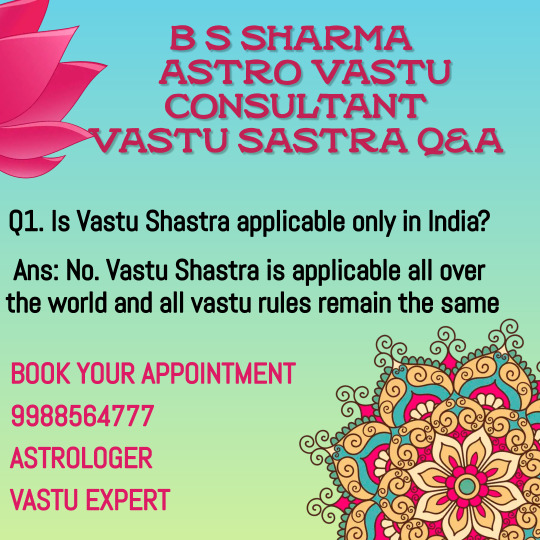Don't wanna be here? Send us removal request.
Text

#vastu tips#vastu for home#vastu directions#religion hindi news#VASTU EXPERT#vastu chakra tool#way of life#vastu gyan#VASTU PURSHA#astrology#birth chart#astrology observations#astro observations#astro community
0 notes
Text
what is vaastu ?
Vaastu is both space and form. Architecture is a combination of material substance and intangible space. The judiciousness with which substance and emptiness are harmonized; the elegant balance between image and reflection, the subtle connection between object and users these are the inherent philosophies of vaastu. The texts known as the Vaastu Shastras have been in existence for several thousand years, and emerge from the oral tradition of the practices of the vishwakarma the designer community of India. The practice is probably much older than the written manuscripts, and perhaps originated in the early emergence of the philosophy and religion of Hinduism. The origin of religious buildings, sculpture, secular buildings, metal ornaments and implements, metal vessels, furniture, jewellery and wooden chariots
have been dealt with in detail in the Vaastu Shastras Communities of designers and craftsmen too took on different aspects of the field as their area of focus and contributed their skills to the social system. They are the manu, mayan, twastha, shilpi and vishwagyon, Unfortunately today they have all become specialized craftsmen: the larger social positions and responsibilities they upheld are no longer valid in the transitional society of modern India. To understand Vaastu Shastra today, we need to look at the entire field of design as it once existed in the country, as well as the holistic paradigm that connected people, their material needs, spiritual urges, and the social order of governance, trade and geographical identities. We cannot take some rules and regulations out of the larger context, place them in an alien environment and expect them either to make sense or offer benefits. the To apply the vaastu paradigm to the modern building we need to understand the theory and practice that existed in the traditional systems. Judicious application can be carried out once the field is comprehended and the holistic fabric of an interwoven traditional society is understood. Today's vestiges of a largely fragmented civilization are no indication of the grand dreams and visions of Vedic India. The principles of vaastu, as also the genesis of Ayurveda,
yoga and Vedanta lie in this distant past, when human beings and their environment were symbiotically connected and each derived strength and dignity from the existence of the other. There were more than sixty classical Sanskrit texts that dealt with the subject of vaastu, as well as scores of local texts in the various Indian languages. More importantly, there were the practices in the field, which remained unrecorded but were handed down as skills from father to son. This included the preparation of materials such as bricks and lime, the dressing of stone, the preparation of timber, the bonding and joining of various materials and curing of surfaces. Till a few years ago, the quality of Indian craftsmanship was praised everywhere, and a succession of invaders used Indian skills for the construction of their own religious and civic buildings. But today many of those skills lie untapped or unrecognized. Some others have been lost through lack of patronage. But with some awareness and awakening, it is possible to bring about a connection between builder, building, occupant and environmental energies, as promised by the Vaastu Shastras.
#vastu expert#building planning and construction#vastu tips#learn vedic astrology#learn vasthu#scintific vasthu#vedic vasthu shastra
3 notes
·
View notes


